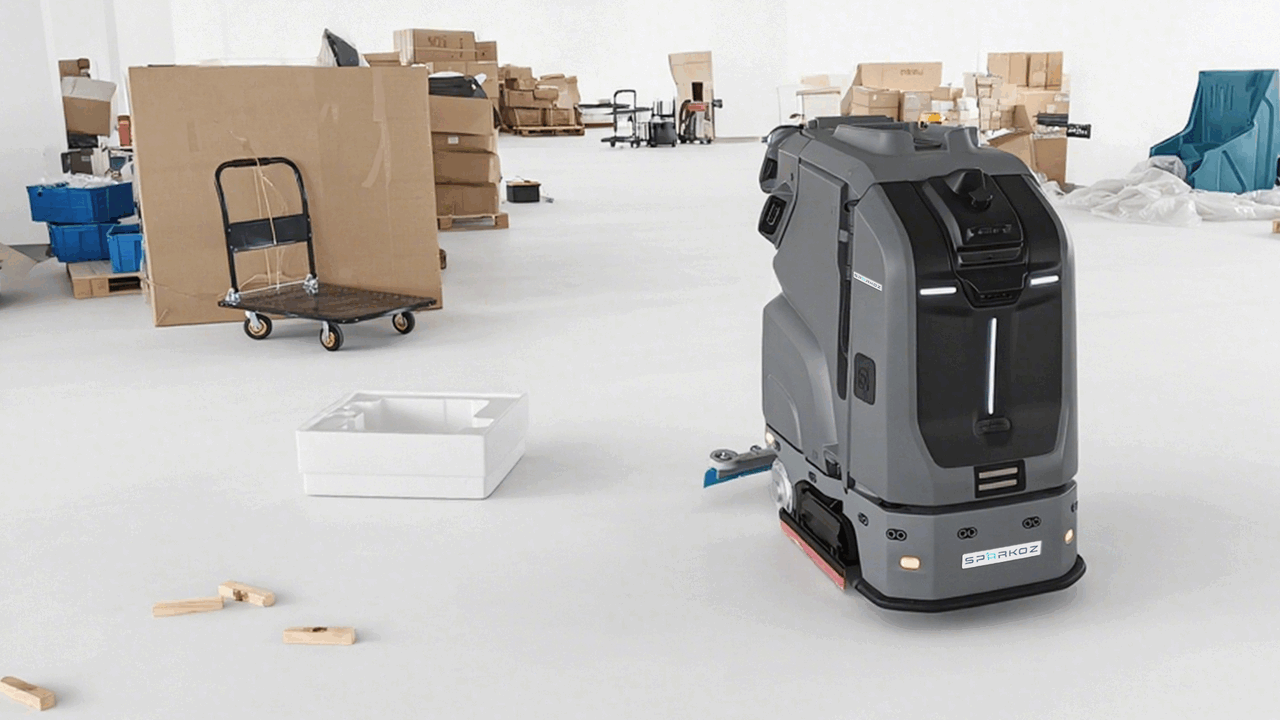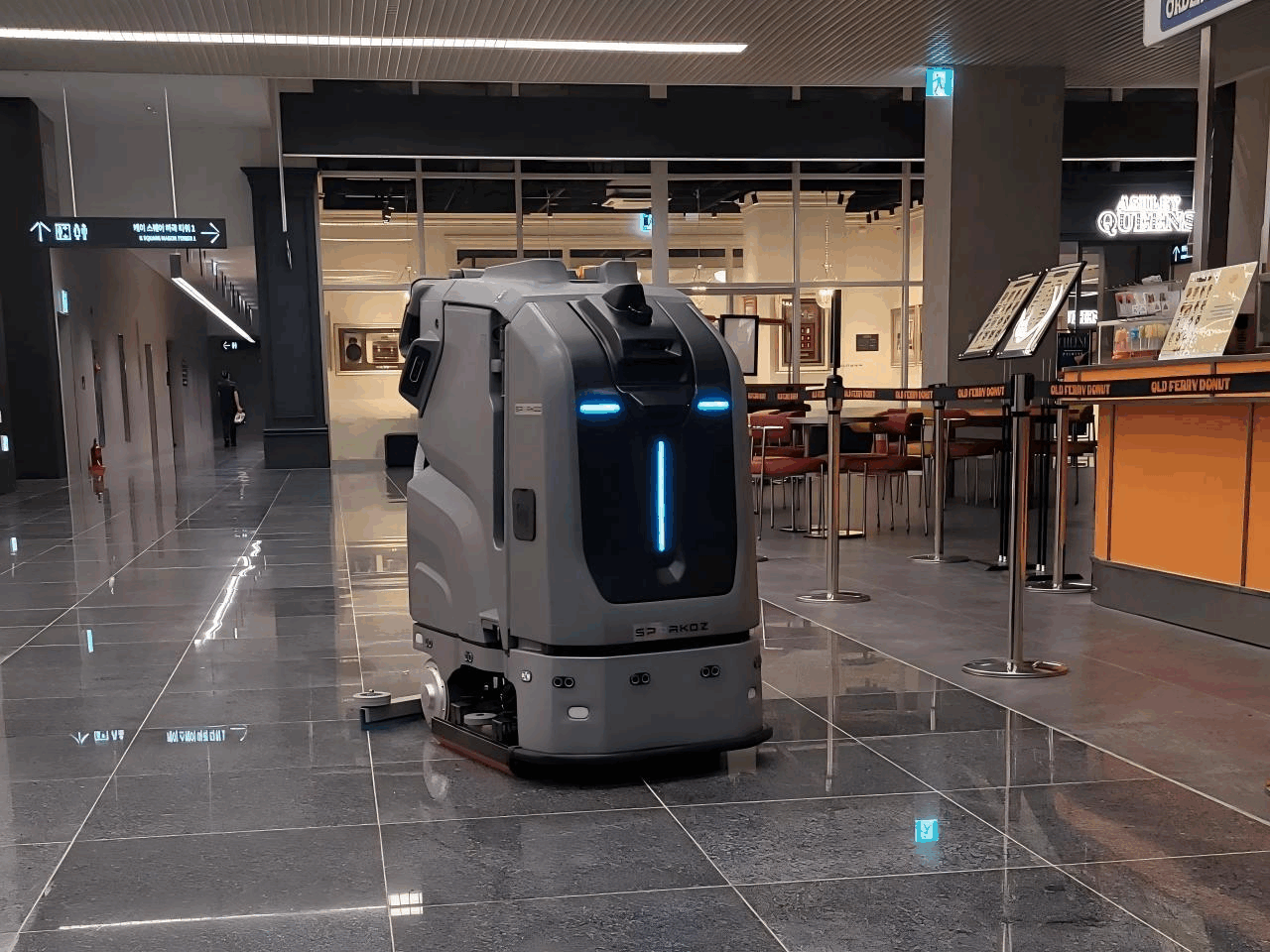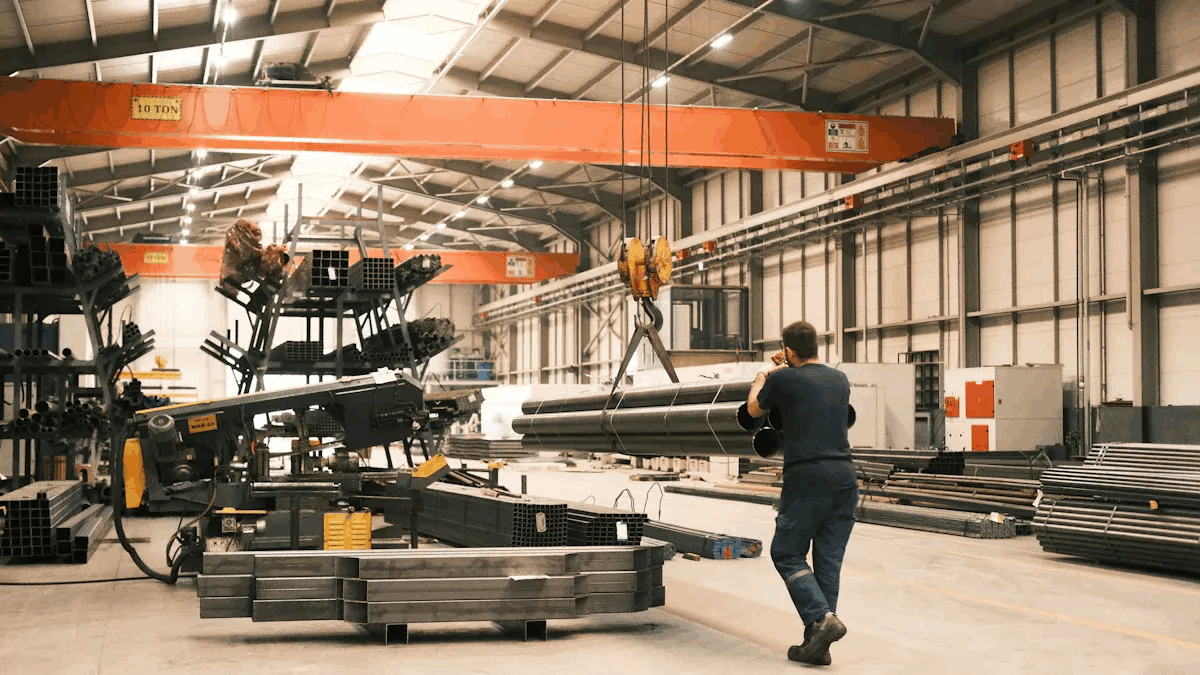
Factories and logistics centers have trouble keeping floors clean and safe. Debris can be dangerous or need special care. There are also tight schedules and worries about cost. Safety rules must be followed too.Clean Up Robots, like the SPARKOZ TN70-PRO Cylindrical Brush Version , help with these problems. These robots work all day and night. They make things run better and lower labor costs. They keep your workplace safe without stopping work.
Clean Up Robots Overview

What Are Clean Up Robots
Clean up robots are smart machines that help keep places clean. They work in factories and logistics centers. These robots move by themselves and do jobs that are dirty or unsafe. They also do jobs that are boring to people.In these places, clean up robots do regular cleaning jobs. They pick up debris,mop floors,and disinfect surfaces. These robots help keep your workplace neat. They also lower the chance of accidents. Using these robots makes your workplace safer. They help you work faster and meet hygiene rules.
The SPARKOZ TN70-PRO is a great example of this kind of robot.It has special navigation and cleaning systems. It can clean big areas and does not miss spots. You can trust it to work all day and night. It keeps your floors clean. Your team can focus on other important jobs.
Key Technologies
Clean up robots use smart technology to work with little help. Here are some main features you will find:
-Advanced Sensors and Mapping: Robots use sensors like LiDAR,ultrasonic, and infrared. These sensors help them see and avoid things. They also help make good maps of your building.
-Artificial Intelligence(AI): AI helps robots plan the best way to clean. It lets them change their path and make choices as they go. For example, the SPARKOZ TN70-PRO uses AI to find debris and pick the best route. It can also change if the layout is new.
-Autonomous Navigation: Robots move on their own. They use maps and sensors to clean every spot. The TN70-PRO can clean up to 1000 m²each hour. It can work for a long time without stopping.
-Connectivity and Remote Control: You can watch and control robots from far away. You can set cleaning times and see updates as they work.
-Energy Efficiency: New robots use batteries that last longer and save power. Some robots can charge themselves. This lets them work all day and night without people.
-Safety Features: Clean up robots like the TN70-PRO have many safety checks. They have extra sensors to stay safe. This lets them work near people and other machines.
These technologies help clean up robots keep your workplace clean and safe. They also make your work easier and faster.
24/7 Operation

Automation and Efficiency
Clean Up Robots can keep your building clean all day and night. These robots use smart sensors and AI to move by themselves. They can see things in their way and avoid bumping into them. They keep cleaning even when no one is around. Robots like the SPARKOZ TN70-PRO go back to charge when their battery is low. Their batteries let them recharge and start working again without stopping. Some robots can fill up with water and empty trash by themselves. You do not have to do these jobs. This much automation means less waiting and more cleaning gets done.
Note: Robots can keep track of what they do and send updates right away. You can check how they are working and make sure cleaning is going well.
Here is a table that shows how these features help robots work all the time:
| Feature | Description | Benefit |
| AI Navigation & Sensors | Maps and avoids obstacles | Safe, efficient cleaning |
| Autonomous Charging | Returns to dock when battery is low | No manual charging needed |
| Automated Maintenance | Handles water refills and waste discharge | Less human intervention |
| Real-Time Monitoring | Sends updates and logs actions | Easy performance tracking |
Safety and Certifications
Safety is very important in factories and warehouses. You need robots that follow strict safety rules. The SPARKOZ TN70-PRO uses many sensors like LiDAR, cameras, and bumpers to spot even small things. It can stop right away if something is in front of it. This robot has top safety certifications like FCC, CE, TUV, SUD, RoHS, and IEC. These show the robot meets or beats world safety rules for cleaning robots. You can trust it to work safely near people and machines.
Navigation and Adaptation
Factories and warehouses change a lot. You might move machines or change where things are. Clean Up Robots can handle these changes easily. They use AI and sensors to make new maps as they work. If you move something,the robot will see it and change its path. Dirt sensors help the robot find and clean the dirtiest spots. Over time, the robot learns your space and gets better at cleaning. This smart mapping lets the robot clean small spaces, avoid new things, and keep up with your needs.
-Robots use LIDAR, cameras, and infrared sensors to see what is around them.
-AI helps them learn new messes and change how they clean.
-Real-time planning lets them avoid crashes and clean everywhere.
You get a cleaning robot that works on its own, even if your building changes or grows.
Benefits
Safety and Labor Savings
You want your workplace to be safe and run well. Clean Up Robots help you reach this goal. When you use these robots, there are fewer injuries and accidents. Factories using robots for cleaning have seen a 60-85%drop in repetitive strain injuries. This means fewer workers get hurt from doing the same thing over and over.Workers also feel less tired because robots do the heavy and boring jobs.
Robots like the SPARKOZ TN70-PRO use sensors, 3D cameras,and lasers. These tools help them avoid people and things in their way. They slow down in busy spots and use lights to show where they are going. You get better tracking and reports, which helps you follow safety rules. Clean floors mean fewer slips and falls.Other machines, like forklifts and delivery robots,are also safer from accidents.
Tip: A safer workplace means fewer missed days and lower insurance bills.
Productivity and Cost
You want your team to do important work. Clean Up Robots handle the boring cleaning, so your staff can do harder jobs. In many logistics centers, these robots help lower labor costs. You do not need as many people for floor cleaning. Your team can do jobs that need human skills. This helps with labor shortages and high turnover, which is common in cleaning work.
Robots like the SPARKOZ TN70-PRO have automatic charging, self-emptying,and self-cleaning. These features mean less manual work and save money. The TN70-PRO can clean over 2,000 square meters per charge. Its smart battery lasts longer, so you spend less on new batteries. Many companies get their money back in 18 to 24 months because of these savings.
You also get more done. Robots give back 2-4 hours of staff time per unit each day. They use AI to plan the best cleaning paths, so every spot gets cleaned. You can watch their work live and make changes if needed. This keeps your building clean and helps your team work better.
Real-World Examples
You can see how Clean Up Robots help in real places. Here are some examples:
| Company | Implementation Details | Results / Impact |
| Evergreen | Used AI-powered robotic arms for sorting PET bottles | Pick rate doubled to 120 bottles/minute; better material quality and recycling consistency |
| Farsound Aviation | Deployed 10 AI-driven robots for warehouse picking and logistics | Picking times dropped by 78%; order consolidation improved by 127%; better parts traceability |
| Zenni Optical | Used AI vision robots for picking and order fulfillment | Mixed-up orders dropped from 20 to 2.5 per 100,000; 50% more orders processed per hour |
| Chemical Plant | Adopted SPARKOZ TN70-PRO for facility cleaning | 35% lower maintenance costs in two years; improved safety compliance; fewer OSHA fines |
| 99 Ranch Supermarket | Integrated SPARKOZ TN70-PRO into daily cleaning | Cleaner floors, fewer equipment malfunctions, and labor savings |
| Automotive Factory | Used SPARKOZ TN70-PRO for cleaning production areas | Covered 30% more area per shift; improved cleaning quality; less downtime |
The SPARKOZ TN70-PRO stands out in these examples. It works in places like warehouse, factories,retail and airport. You see lower maintenance costs,better cleaning, and improved safety. The robot's modular design and cloud scheduling make it easy to use and care for. You also have less downtime and do not stop your main work.
Note: Using robots like the TN70-PRO helps you have a safer, cleaner, and more productive workplace.
Choosing the Right Robot
You must pick a robot that fits your needs. First, think about some important things:
-Load capacity: Make sure the robot can hold all the debris.
-Repeatability: Pick a robot that cleans the same way each time.
-Speed: See how quickly the robot can finish cleaning.
-Degree of freedom: Some robots move in more ways, which helps in tight spots.
-Navigation: Choose robots that can go around things and change with your layout.
-Efficiency: Get a robot that picks up waste fast and covers every area.
-Interaction: Some robots can work with people or other machines, so they are more useful.
-Sustainability: Look for robots that use less energy and help the environment.
You can use special tools to compare these features. This makes it easier to find the best robot for your factory or warehouse.
Maintenance
Taking care of your robot is very important. Doing regular checks helps your robot last longer and work better. Here are some things you should do:
-Check mechanical and electrical parts often.
-Lubricate moving parts so they do not wear out.
-Clean sensors and brushes to keep them working well.
-Run system tests to find problems early.
You should also see if spare parts are easy to get. Using sensors to spot problems before they happen can save you time and money. Change your maintenance plan if your work or automation changes.
Cost and RaaS
There are two main ways to pay for cleaning robots. You can buy them or use Robotics as a Service(RaaS). Buying means you pay a lot at first and handle all repairs and updates. RaaS lets you pay each month with no big starting cost. The provider takes care of repairs, updates, and maintenance. This way,you can add or remove robots as your needs change. RaaS also gives you new technology and lowers the chance of surprise costs. If you want more choices and less risk, RaaS is a good option for many companies.
Trends
AI and Smart Factories
You see artificial intelligence changing how factories work. AI helps robots clean, inspect, and keep your workplace safe. In smart factories, AI uses cameras and sensors to spot dirt and defects right away. This means you waste less and keep your floors cleaner. AI also watches how robots perform. It can tell you when a robot needs fixing before it breaks down. This keeps your factory running without long stops.
AI connects robots to factory software. It helps you plan cleaning and production at the same time. Robots learn from data and get better at their jobs. They can change how they clean if your factory changes. You get more flexibility and higher quality. AI lets robots work with digital twins, which are computer models of your factory. This helps you test new cleaning plans before using them in real life.
AI makes your factory smarter, safer, and more productive. You can trust robots to handle tough cleaning jobs while you focus on other work.
Future Innovations
You will see many new features in cleaning robots soon. Companies now use machine learning, computer vision, and smart sensors. These tools help robots map your space, find dirt, and avoid obstacles. Some robots can even tell the difference between trash and useful items. They use LiDAR and cameras to move around tight spaces and change routes if something blocks their way.
Here are some exciting trends you might notice:
-Robots will connect to building systems and elevators for multi-floor cleaning.
-Touchscreens and easy controls will make robots simple to use.
-Real-time reports and dashboards will show you where cleaning happened and where dirt remains.
-Robots will adjust cleaning power based on floor type and dirt level.
-Self-monitoring parts will alert you when brushes or filters need attention.
In the next five years, robots may work together in teams, use swarm intelligence, and even deploy helpful microbes to break down waste. These changes will help you keep your factory cleaner, save money,and protect the environment.
You can make your factory safer and more efficient with advanced cleaning robots like the SPARKOZ TN70-PRO. These robots help you lower costs, improve safety, and keep your floors spotless around the clock. Take time to review your facility's needs and see how automation fits your goals. For more details, reach out to trusted providers or explore case studies to guide your next steps.
FAQ
How do clean up robots know where to clean?
Clean up robots use sensors and smart maps. You set cleaning zones. The robot learns your space and finds the best path. It avoids obstacles and covers every area.
Can the SPARKOZ TN70-PRO work around people and machines?
Yes! The TN70-PRO uses advanced sensors to spot people and equipment. It slows down or stops if something is in its way. You can trust it to work safely in busy areas.
What maintenance does a clean up robot need?
You should check brushes, sensors, and batteries often. Clean the robot and remove debris. Follow the maintenance schedule in the manual. Regular care keeps your robot working well.
Is it hard to set up a clean up robot?
No, setup is simple. You follow step-by-step instructions. The robot maps your space and starts cleaning. You can adjust settings using a touchscreen or app. Most users finish setup in less than an hour.